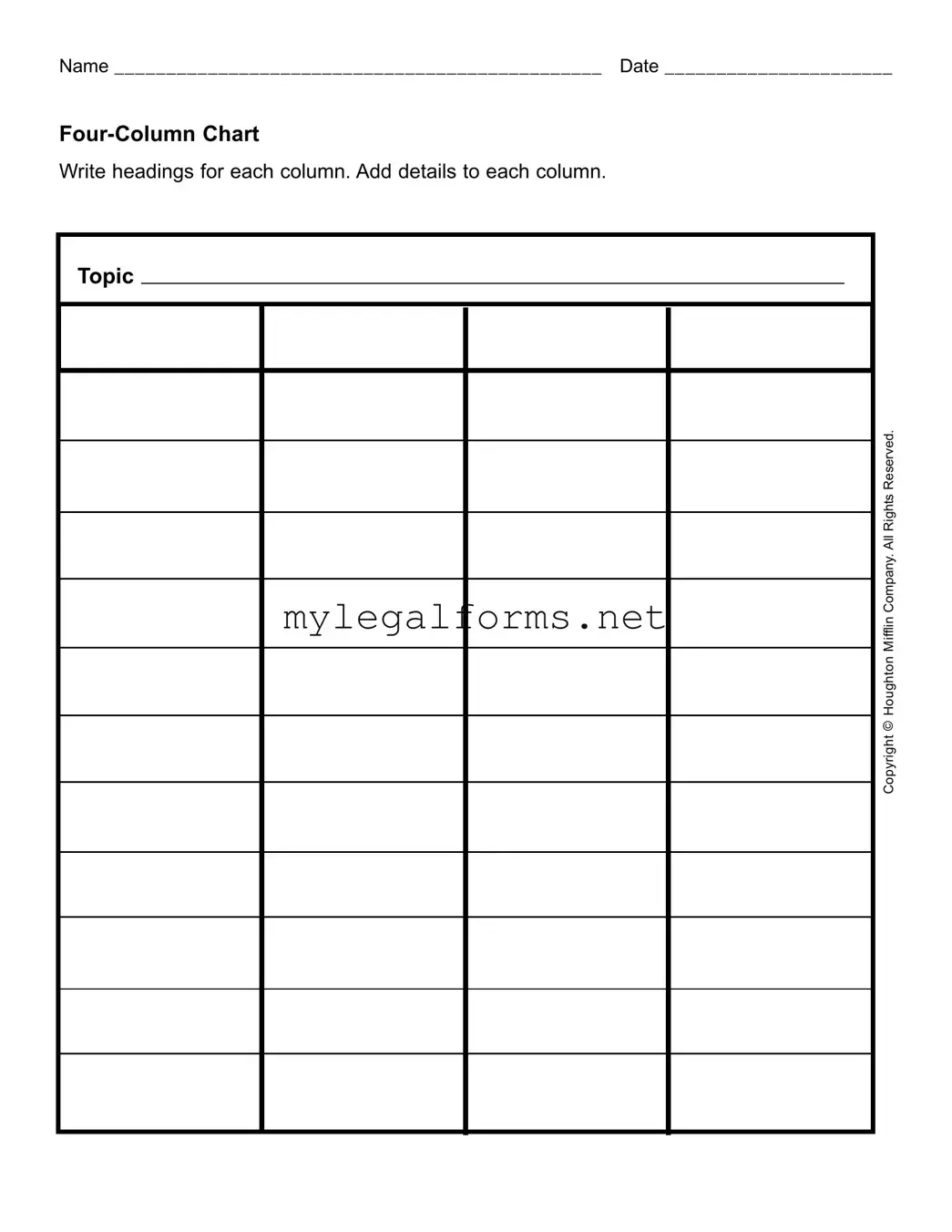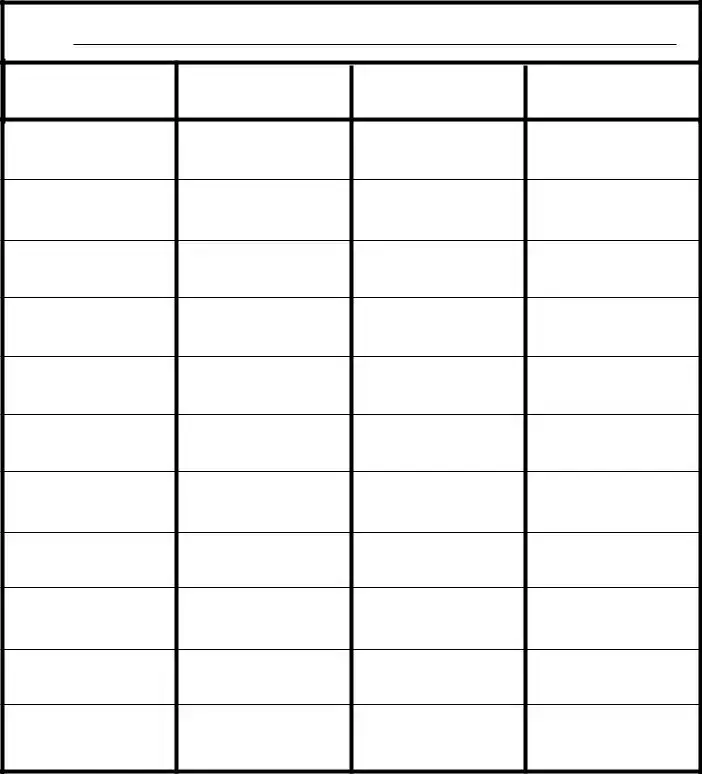The Four Column Chart form is a versatile tool designed to help individuals and teams organize information in a clear and structured manner. This form typically consists of four distinct columns, each serving a specific purpose. Users can easily label the columns with headings that reflect the categories of information they wish to capture. The simplicity of this layout allows for a straightforward approach to data collection and analysis. Whether you're brainstorming ideas for a project, outlining key points for a presentation, or comparing different concepts, the Four Column Chart provides an effective framework. With spaces for names and dates, it ensures that all entries are properly attributed and time-stamped, enhancing accountability and clarity. This form is particularly useful in educational settings, business planning, and team collaborations, making it an essential resource for anyone looking to streamline their thought process and improve communication.

